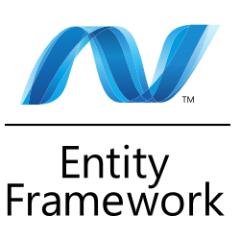In one of my latests post I wrote about Hybrid Code First. When I started to write about it I realised that it is not very clear and transparent what does Code First, Database First and Model First are and what are differences between them.
The main scope of this post is to define in a few words each of this mechanisms and what are the main difference between them.
There is no best solution. Based on the needs and different context you will prefer to use a specific solution. For example, when you have an existing database you may prefer to use Database First. If you want to have full access to entities than you may prefer Code First.
The main scope of this post is to define in a few words each of this mechanisms and what are the main difference between them.
- Code First - Define the domain first in code. Based on this domain, the database will be created on the fly by Entity Framework. This approach is used very often in combination with DDD (Domain Driven Development)
- Database First - Define the database schema first. Based on it, EF generates the code that maps the database to our entities and the access mechanism
- Model First - Define the model in a design tool. Based on this design, EF will generate the entities and the database structure that is needed
Now, that we know what are the available mechanism to define and map our model, let's see what are the main characteristics of each of this mechanism.
Code First
- Full control to the code
- No code generated by tools of frameworks
- DB schema doesn't need to be managed
- Mapping can be done from the code directly using Fluent API
- EF designers are not required
- Changes to database schema will be lost (because the code defines the schema - Except when you are using Hybrid Code First)
- DB creation is managed 100% by EF
- No DB knowledge is required (until you have performance problems)
Model First
- A designer that can be used to define the model
- Entities (using t4 template) and DB schema is generated automatically from this designer
- For custom POCO configuration or extensibility you will need to use partial classes or modify T4 template
- No direct control the DB schema that is generated
- No direct control of POCO entities that are generated
- Any change in DB schema will be lost or will cause an error in the EF, because DB is generated using the model defined in the designer
Database First
- Full control at DB schema
- Database can be created separately and POCO entities will be generated automatically
- Existing database can be used without any kind of changes
- Database schema can be changed without any kind of issues and the entities will be updated
- Any additional items on POCO entities will required partial classes or changes of T4 template

Comments
Post a Comment